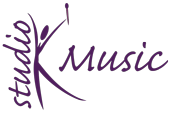Focus
“Shecwendsa Bay” is a Canadian tune I once learned from a marvelous fiddle player, April Verch. Unfortunately, having learned it by ear nearly 15 years ago, I do not have original music or recording of the tune. This arrangement is my own based on my memory and adapted variations. As you rehearse, pay careful attention to rhythm, and when you have mastered it, add some Scottish flare with ornamentation of trills, slides, and grace notes.
Key:
D Major
Difficulty:
Early Intermediate
Prevalence:
Low. This is not a common tune, but it’s an enjoyable all the same
D Major Scale and Rhythm Practice:
As always, warm up with a scale D Major Scale
In D Major, there are two sharps, F# (second finger on the D string and first finger on the E string) and C# (third finger on the G string and second finger on the A string). As a bonus, this scale is written in 3/4 time, so feel free to challenge your bowing by playing a rhythm pattern of your choice. See Waltz Rhythm Practice for inspiration! When practicing rhythms, it’s always a good idea to play with a metronome or accompanist. Featured in these exercises are rhythm patterns found in “Shecwendsa Bay”, so be sure to master each one.
D Major Scale
Waltz Rhythm Practice
Sheet Music:
Listen:
Check in again soon for a video of yours truly playing the tune as written.
Continued Learning
“Shecwendsa Bay” is eerily similar to the well known American fiddle tune, “Ashokan Farewell” by Jay Unger. If fact, the lilting waltz, the key, and the form are identical between the two. Both are well worth learning, but that requires knowing each inside and out to avoid confusion or switching between them accidentally. Check in another time as I intend to post “Ashokan Farewell” in the near future!
